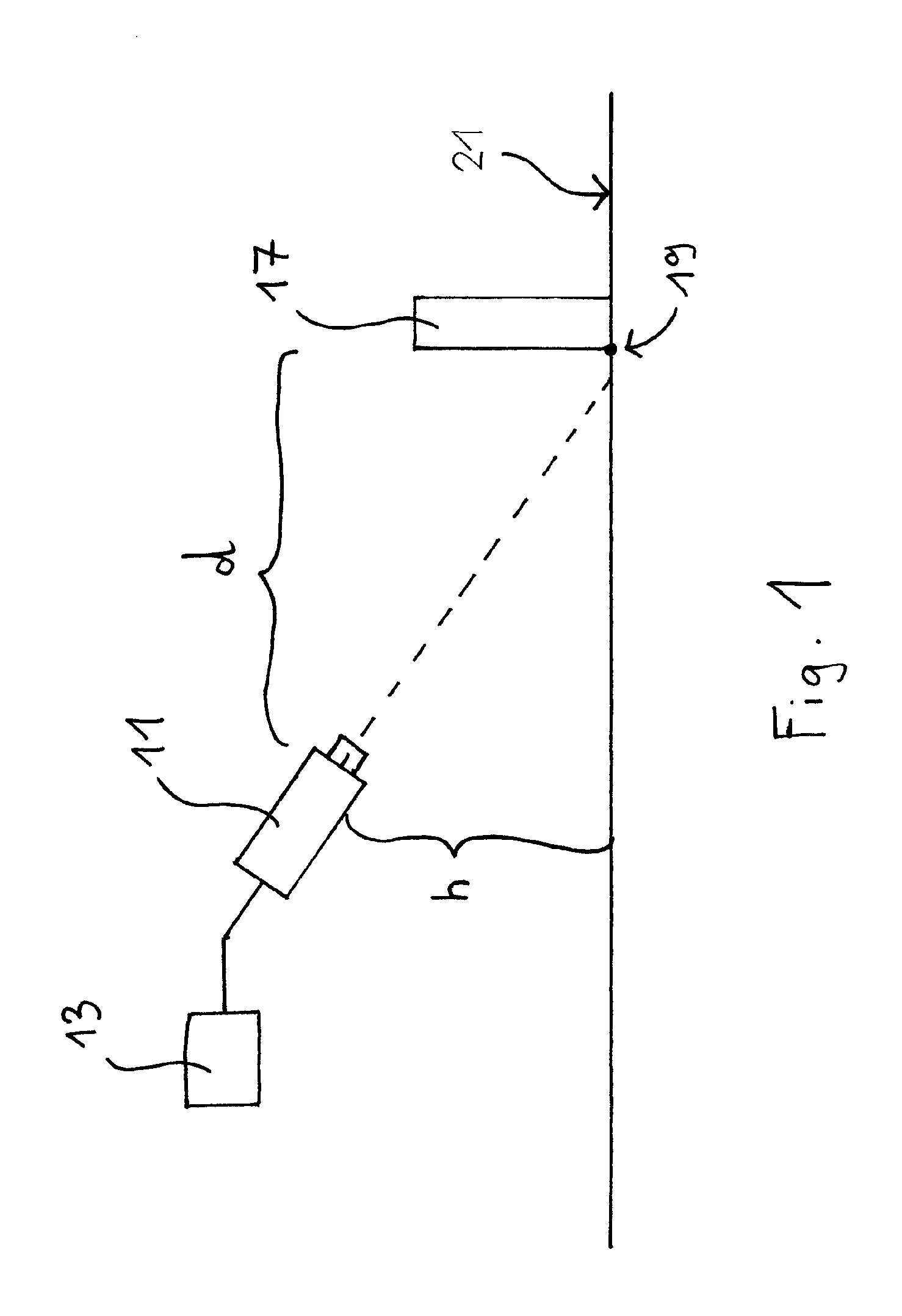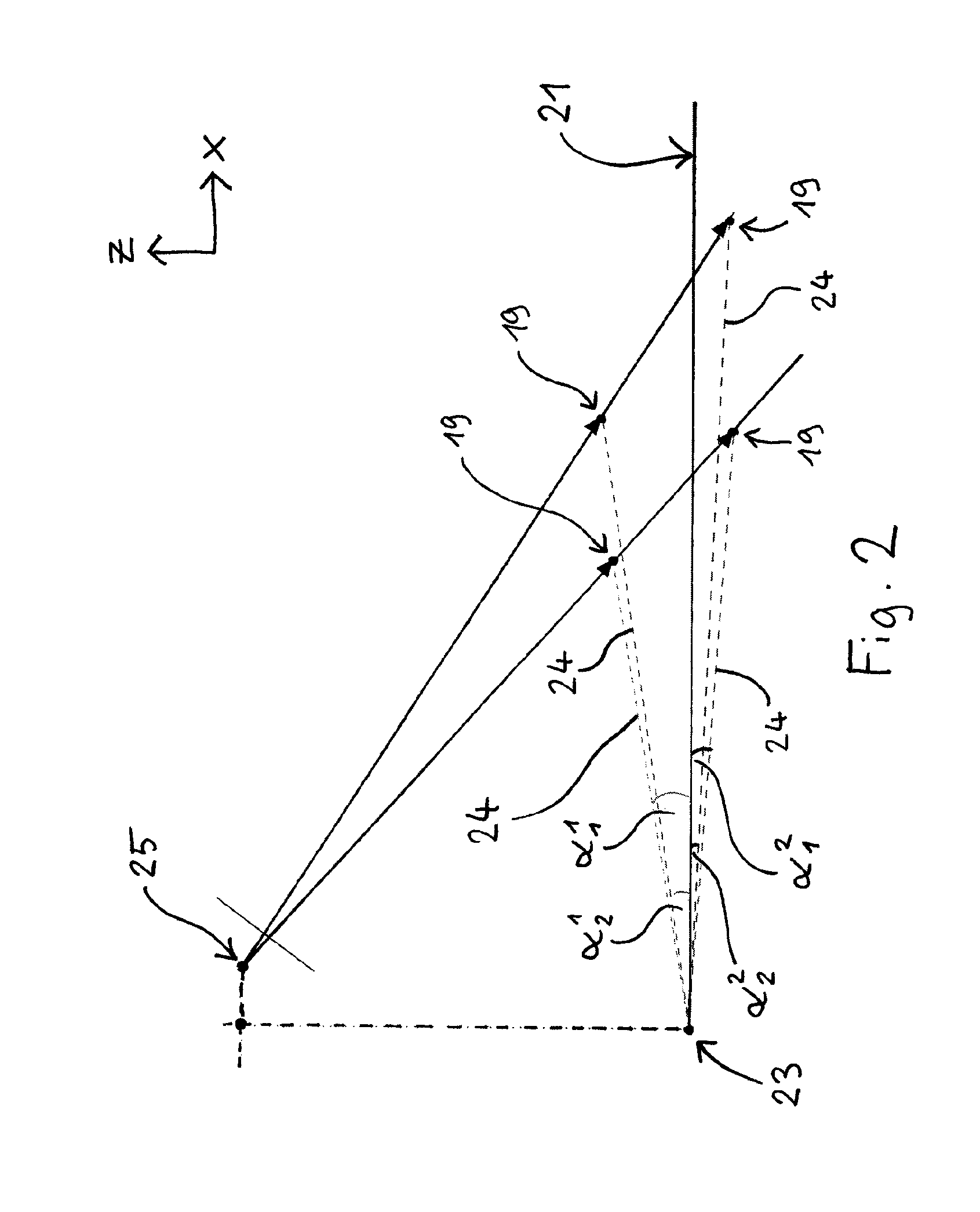Method To Determine Distance Of An Object From An Automated Vehicle With A Monocular Device
a technology of monocular devices and distances, applied in distance measurement, television systems, instruments, etc., can solve the problem that prior information cannot be used as a highly valid assumption, and achieve the effect of saving computing steps and sufficient reliability
- Summary
- Abstract
- Description
- Claims
- Application Information
AI Technical Summary
Benefits of technology
Problems solved by technology
Method used
Image
Examples
Embodiment Construction
[0028]FIG. 1 illustrates a non-limiting example of an apparatus that includes a monocular image capturing device 11, hereafter referred to as the device 11, which may be, for example, a digital camera. The apparatus also includes an image processing system 13, preferably a computer-assisted image processing system, associated with or in communication with the image capturing device 11. The device 11 is advantageously mounted on an automated vehicle (not shown) at a predefined or known value of height h above the plane of a road 21. The device 11 is configured to take or capture images of the environment or area about the vehicle at regular time intervals. The image processing system 13 may be configured to classify and / or track objects 17 of interest in the captured images, objects such as pedestrians, other vehicles, road signs, and the like using the images received / output by the device 11. Only one object 17 is shown in FIG. 1 in schematic form for reasons of simplicity. The imag...
PUM
 Login to View More
Login to View More Abstract
Description
Claims
Application Information
 Login to View More
Login to View More - R&D
- Intellectual Property
- Life Sciences
- Materials
- Tech Scout
- Unparalleled Data Quality
- Higher Quality Content
- 60% Fewer Hallucinations
Browse by: Latest US Patents, China's latest patents, Technical Efficacy Thesaurus, Application Domain, Technology Topic, Popular Technical Reports.
© 2025 PatSnap. All rights reserved.Legal|Privacy policy|Modern Slavery Act Transparency Statement|Sitemap|About US| Contact US: help@patsnap.com



